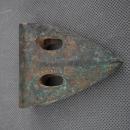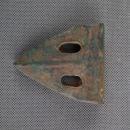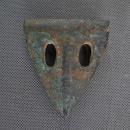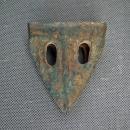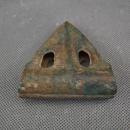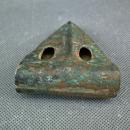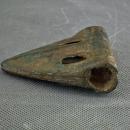Ancient Egyptian Or Canaanite Bronze Duckbill Axe Head 2100– 1500 B.C.








$700.00
Or Best OfferAncient Egyptian or Canaanite bronze 'Duckbill' axe-head, Middle Kingdom–Early New Kingdom 2100– 1500 B.C.
Sturdy cast in two halves with a triangular blade, a medial ridge flanked with two oblong openings, and a small round eye for inserting a wooden socket.
Such duckbill axes were mainly produced in Egypt and Syria-Palestine during Phase IIA of the Middle Bronze Age, roughly contemporaneous with the 12th Dynasty in Egypt.
At that time, these territories were under the rule of Egypt. This axe is around the life and times of the biblical patriarchs Isaac, Jacob, and Joseph. That puts it pre-Moses 300 to 500 years.
An axe head very similar to this one was found in a tomb from the late 12th Dynasty at Tell el-Daba (ancient Avaris) in the Nile Delta, where many Asiatic people settled during the Middle Kingdom and later established Avaris, the capital city of the Hyksos dynasty.
REFERENCES: Two similar axes from the Louvre Museum in Paris were published in the catalog "Les armes de l'Egypte ancienne - La collection du musée du Louvre de Nathalie Couton-Perche" Page 78-79. Cat 47- 048.
To view a related Egyptian axe, please see the link below:
https://www.metmuseum.org/art/collection/search/545716
https://commons.wikimedia.org/wiki/File:Egyptian_duckbill-shaped_axe_blade_of_Syro-Palestinian_type_1981-1550_BCE.jp
CONDITION: Perfect condition for an antique bronze combat axe that is over 3,500 years old. The surface is covered with a natural brown-green patina and earth encrustation. No cracks and no repairs.
PROVENANCE: Ex-private old Canadian collection of antiques and antiquities formed in the 1980s.
MEASUREMENTS:
Overall length: 7.7 cm (3.03 inches)
Height of the blade: 6.3 cm (2.48 inches)
Thickness of the socket: 2.3 cm (0.91 inches)
Weight: 141 grams.
